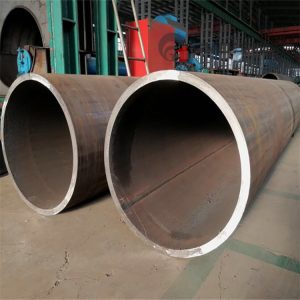High-frequency welded pipe welding methods and advantages
High-frequency welded pipe welding mainly uses the skin effect and neighborhood effect of high-frequency current to make the current highly concentrated on the edge to be welded, which is heated to the welding temperature (1130-1350’C). Then under the action of the extrusion roller for pressure welding.
This welding method of high-frequency welded pipe has a series of advantages:Welding heat-affected zone is small, the heating rate is fast, can greatly improve the welding speed and welding quality, the strip can be used as a billet without pickling and trimming.

In the case of conductive-feed welding, high-frequency current is transmitted through two contact heads (electrodes) 2 and 3 to the pipe billet 1. The welding current flows along both sides of the beveled surface of the pipe billet, forming a loop at the point of intersection on both sides of the groove near the pressure roller 5. The direction of the current on the sloping sides of the pipe is opposite. So the proximity effect of high-frequency pipe welding concentrates the current on the bevel surface. The higher the frequency of the current, the higher the current density on its surface. The resistor increases the concentration of molten pool heating because it increases the inductance of the current flowing around the billet.
With this welding method, the contact head can be placed at different distances (30-200 mm) from the intersection point. As the billet moves, the contact head can slide along the top or bottom of the edge of the HF welded pipe to be welded. Due to the simple and reliable construction of the welding device, the option of placing the contact head at the edge to be welded is widely used.